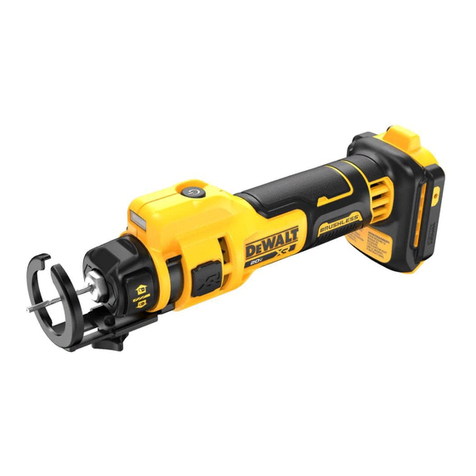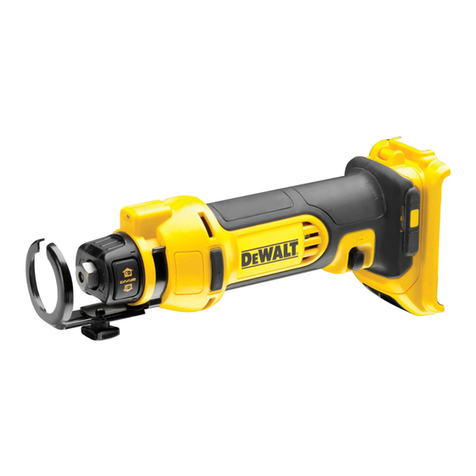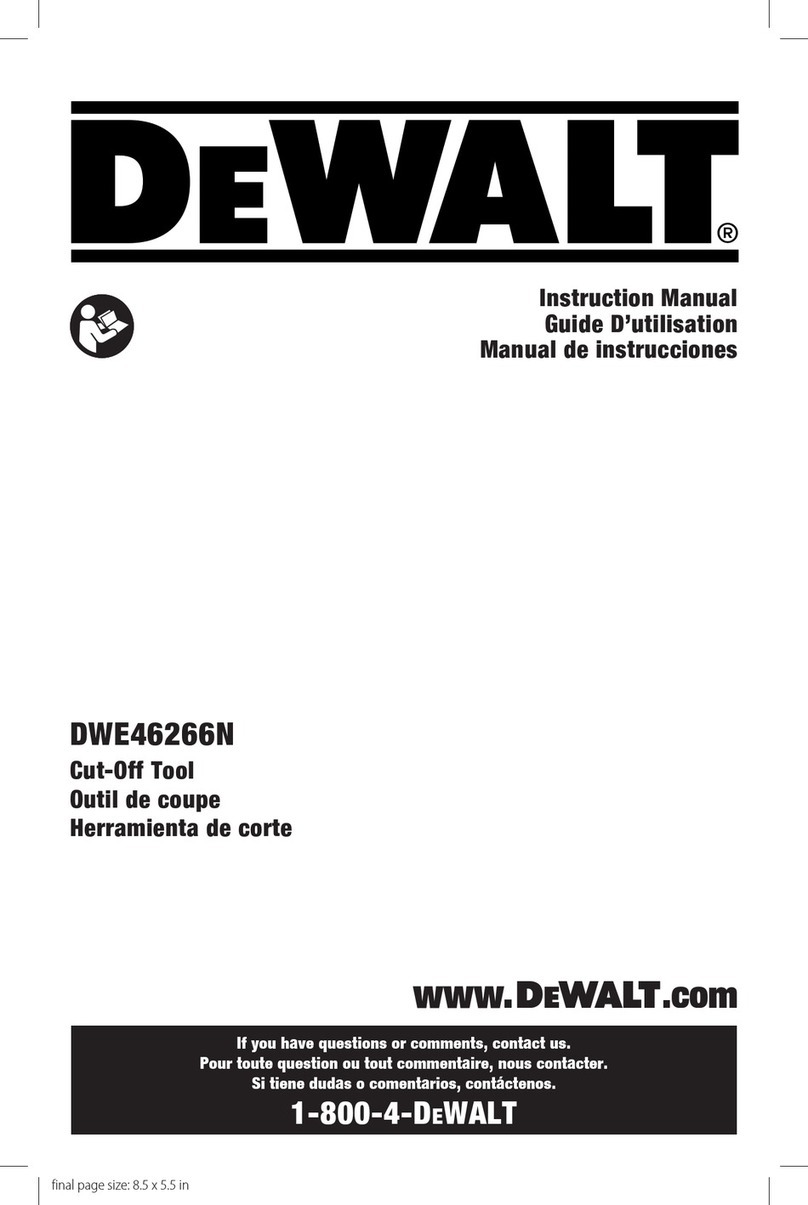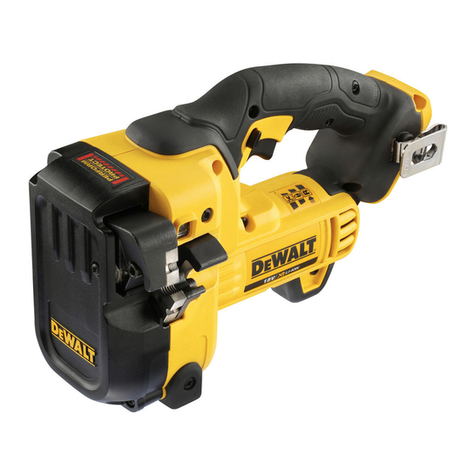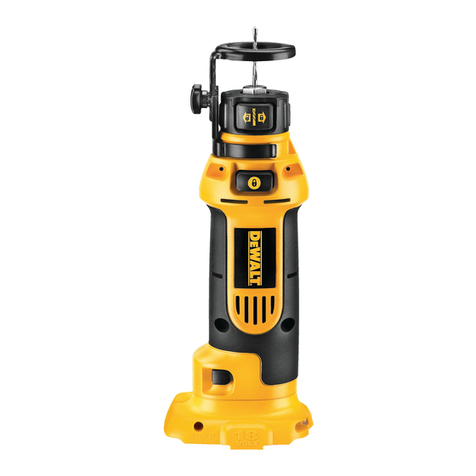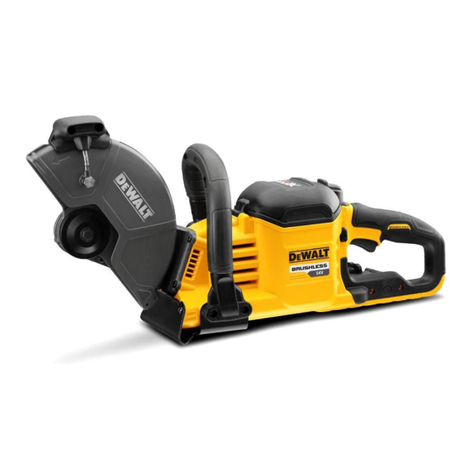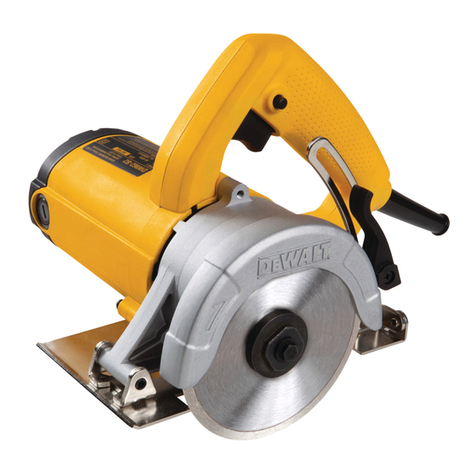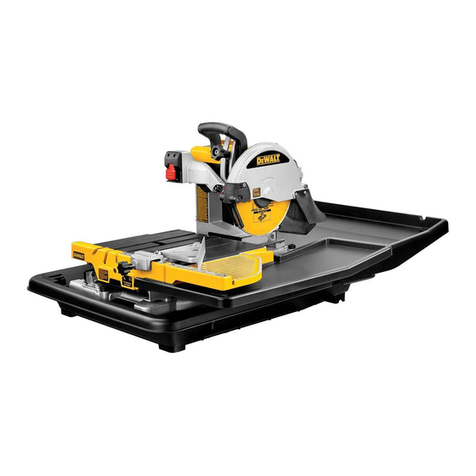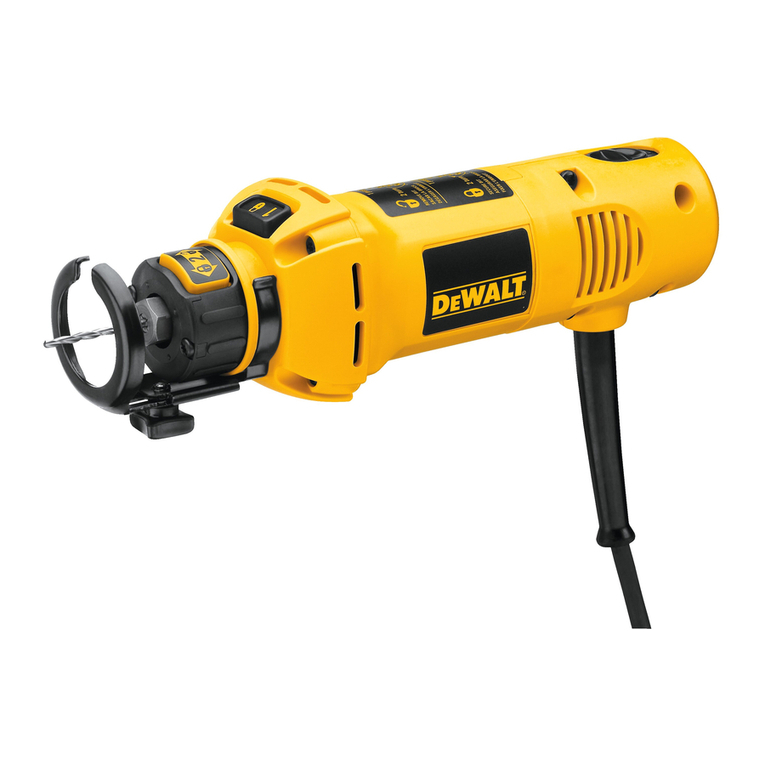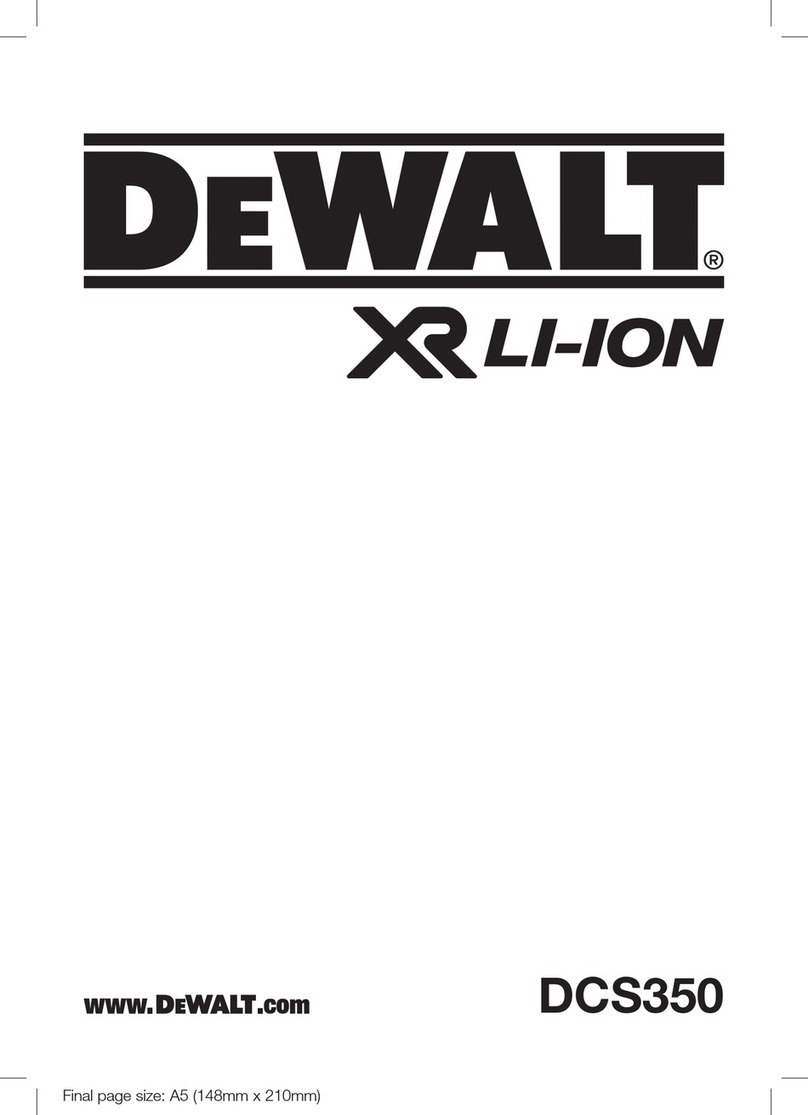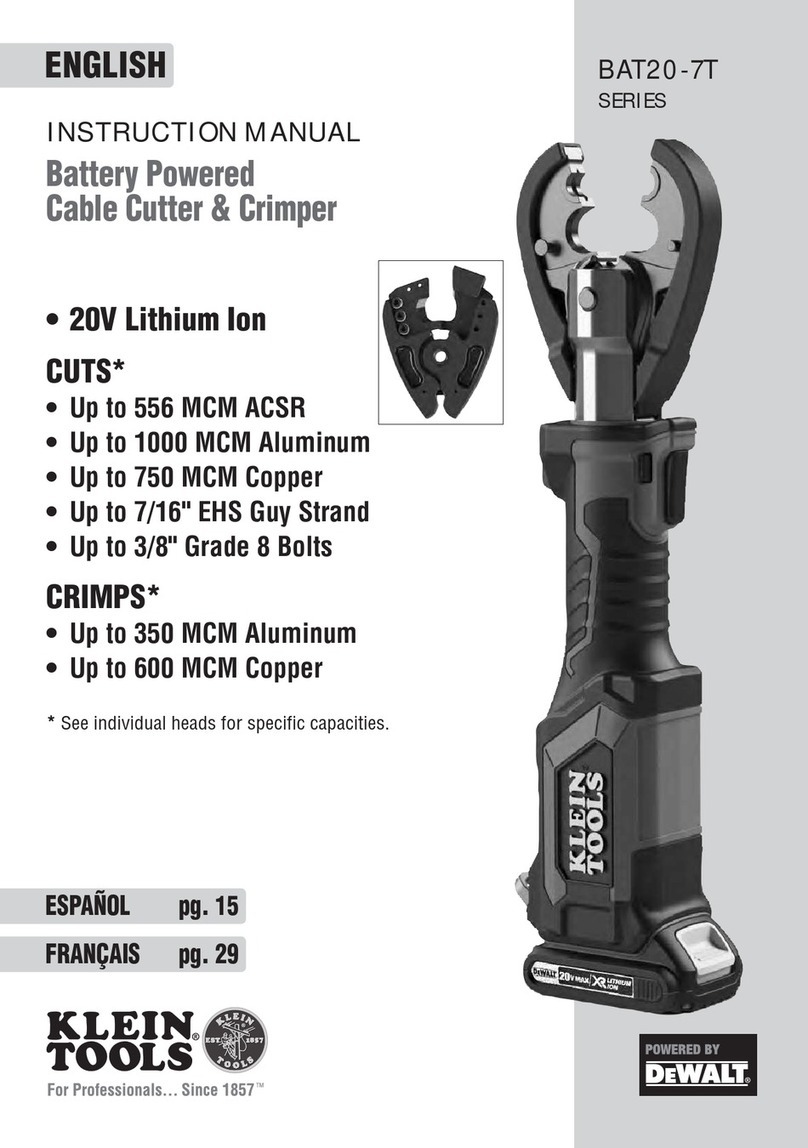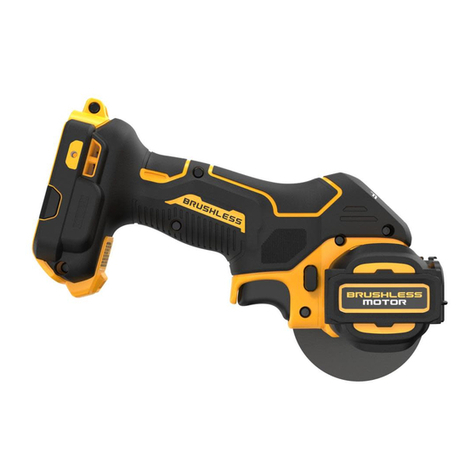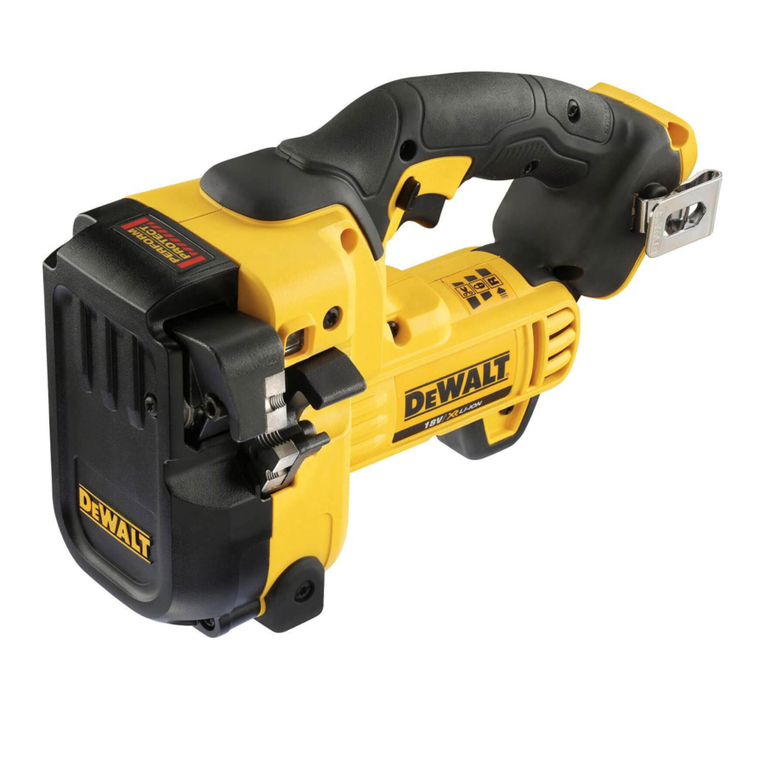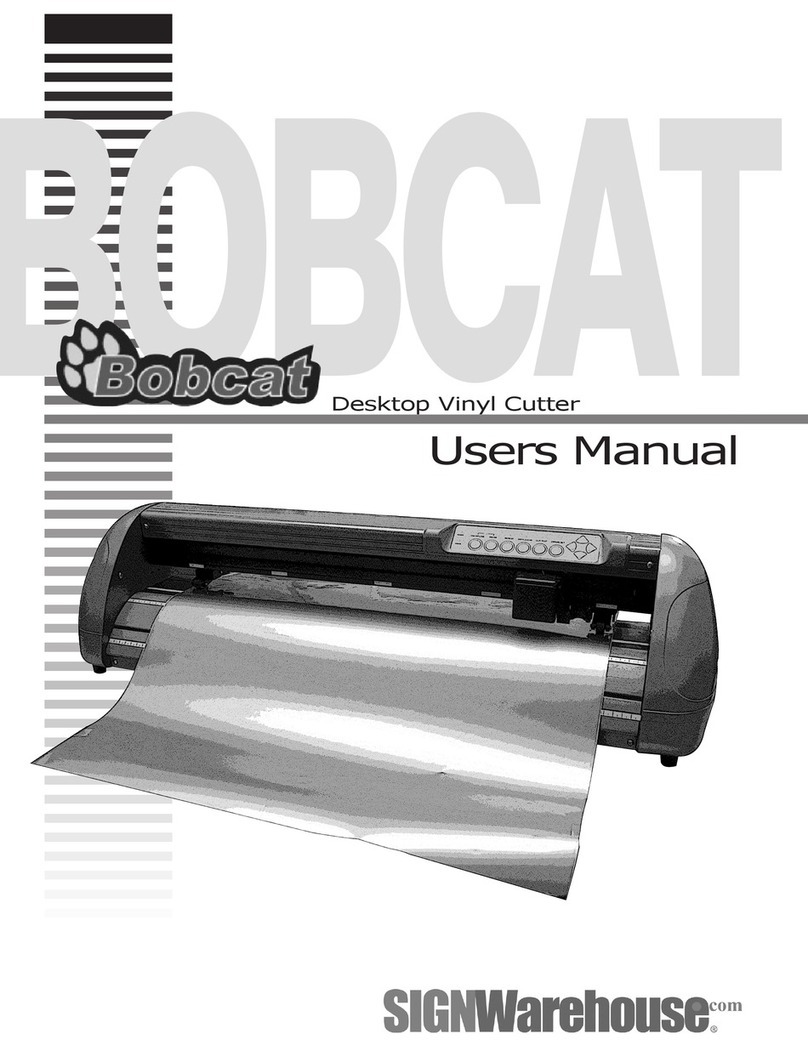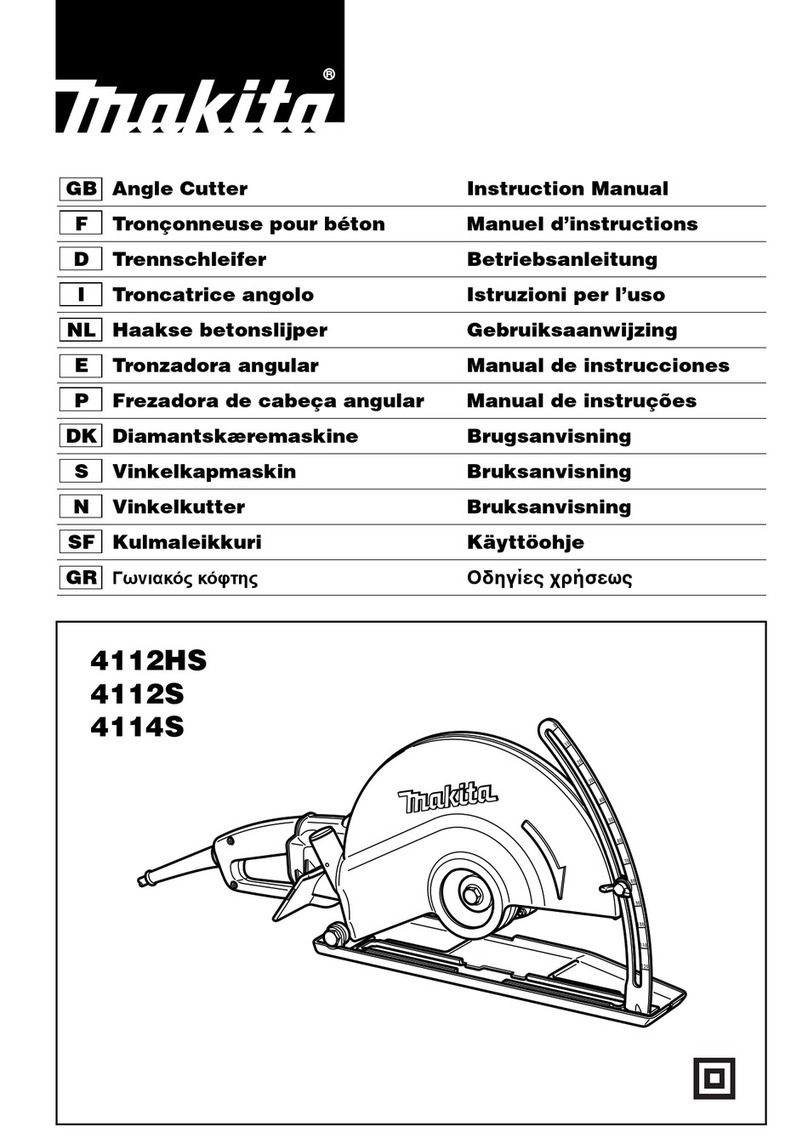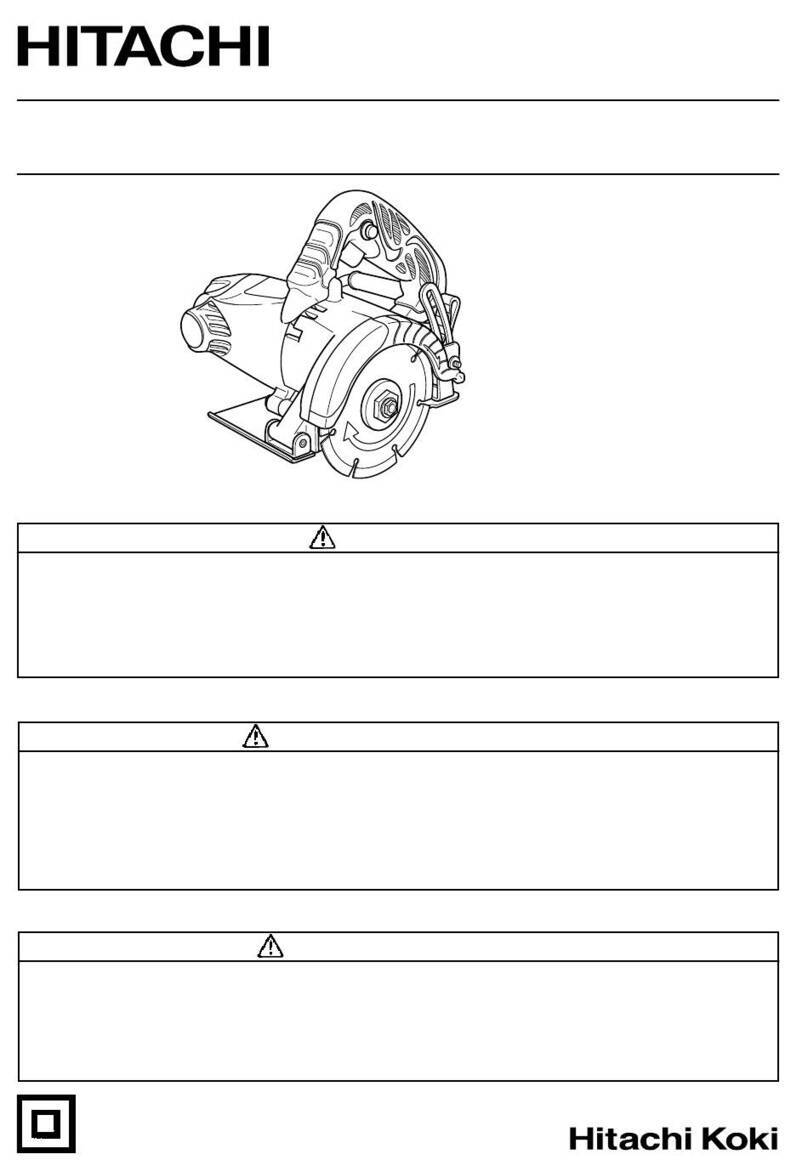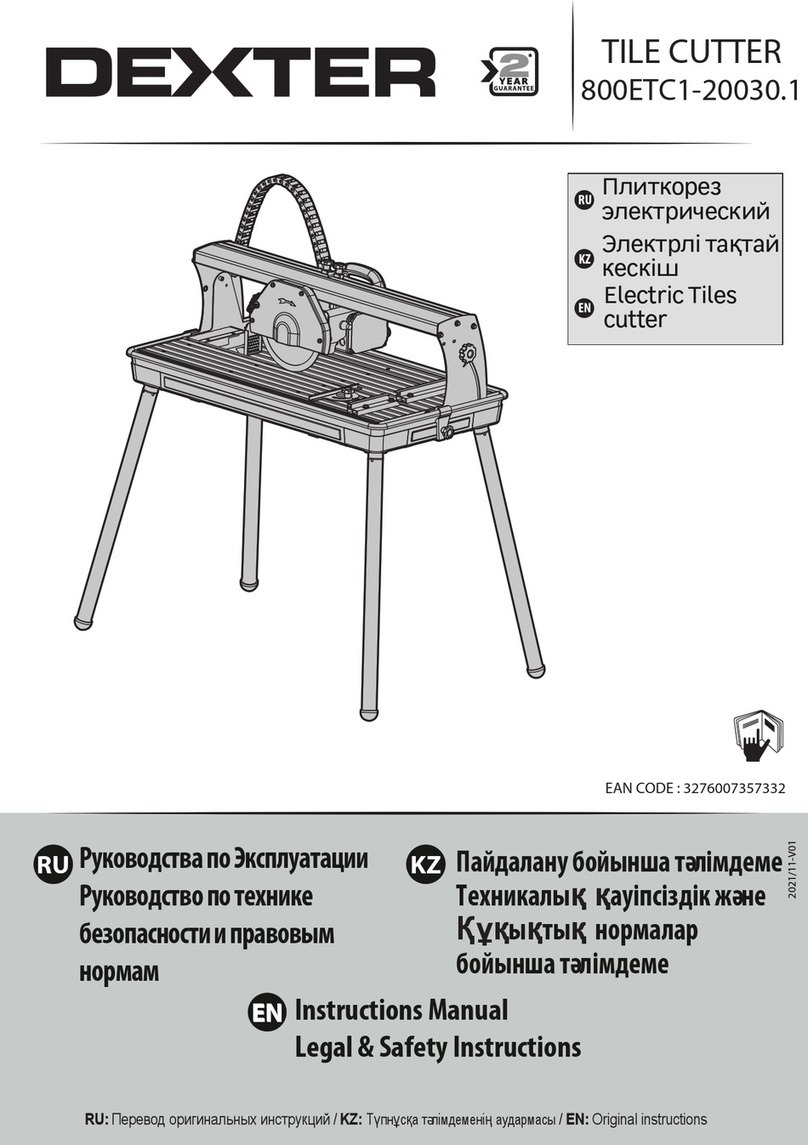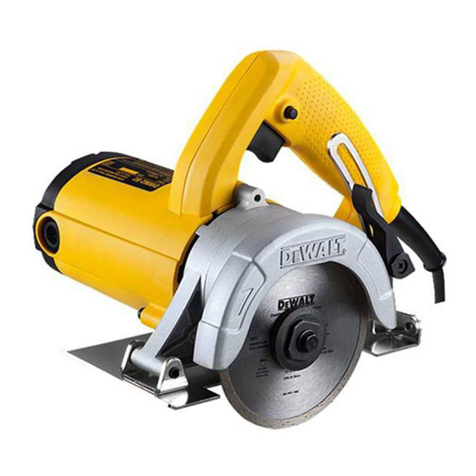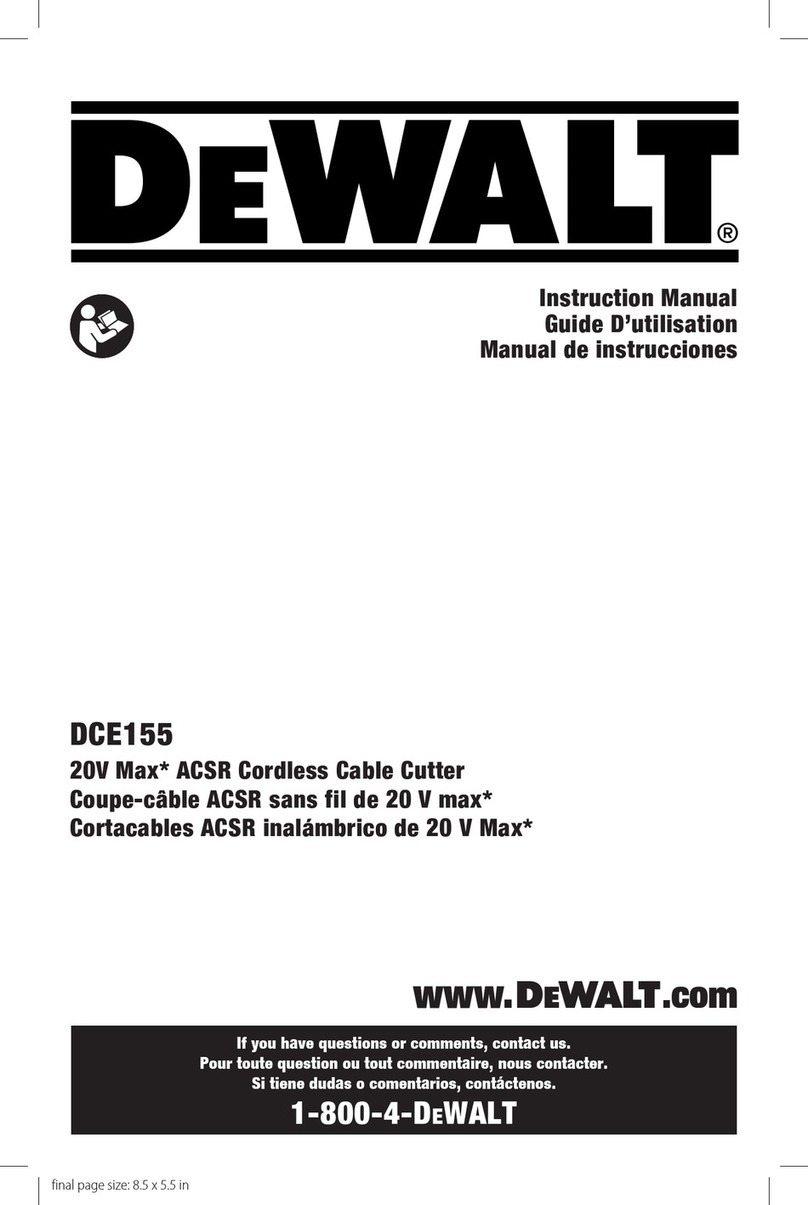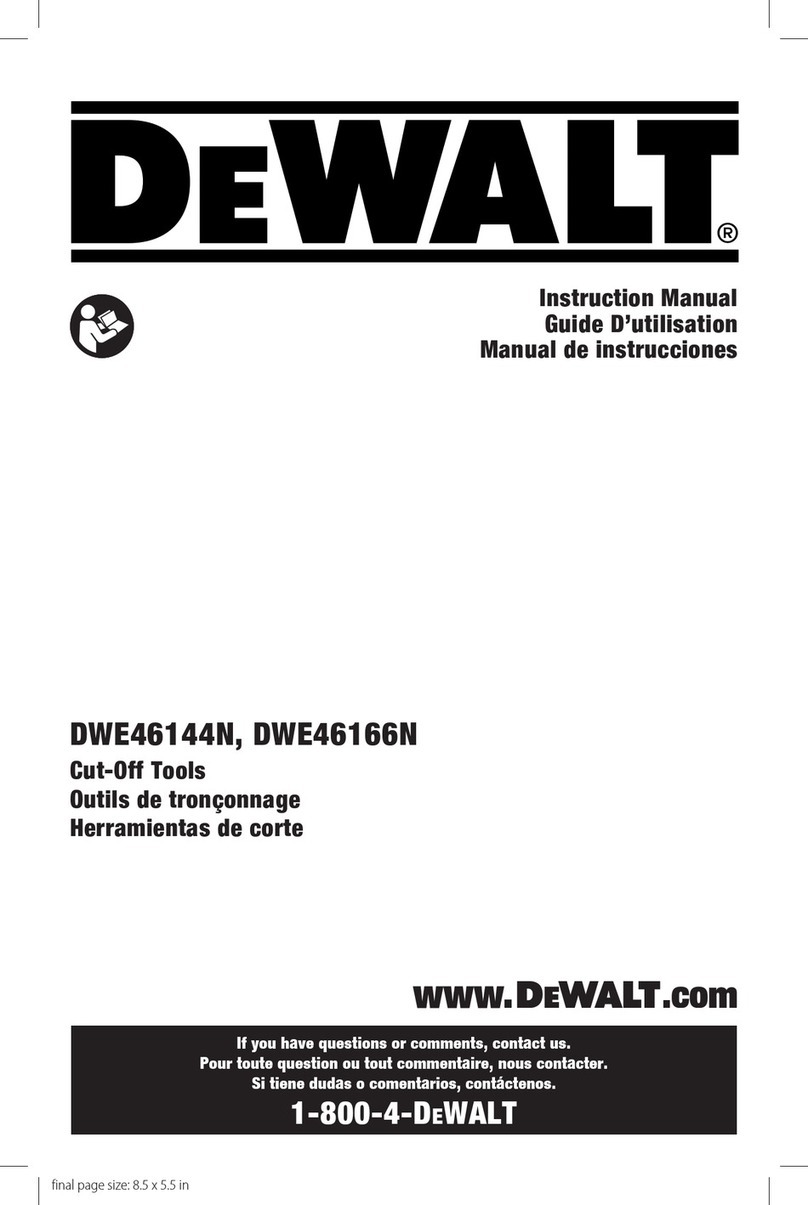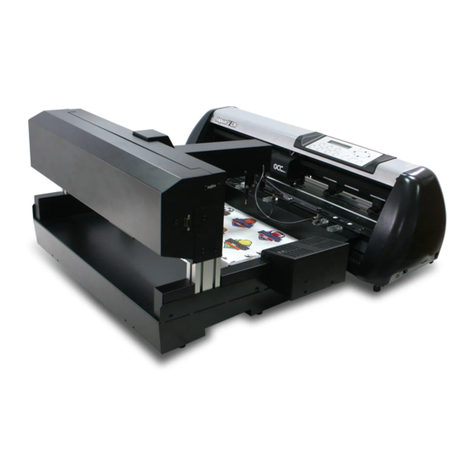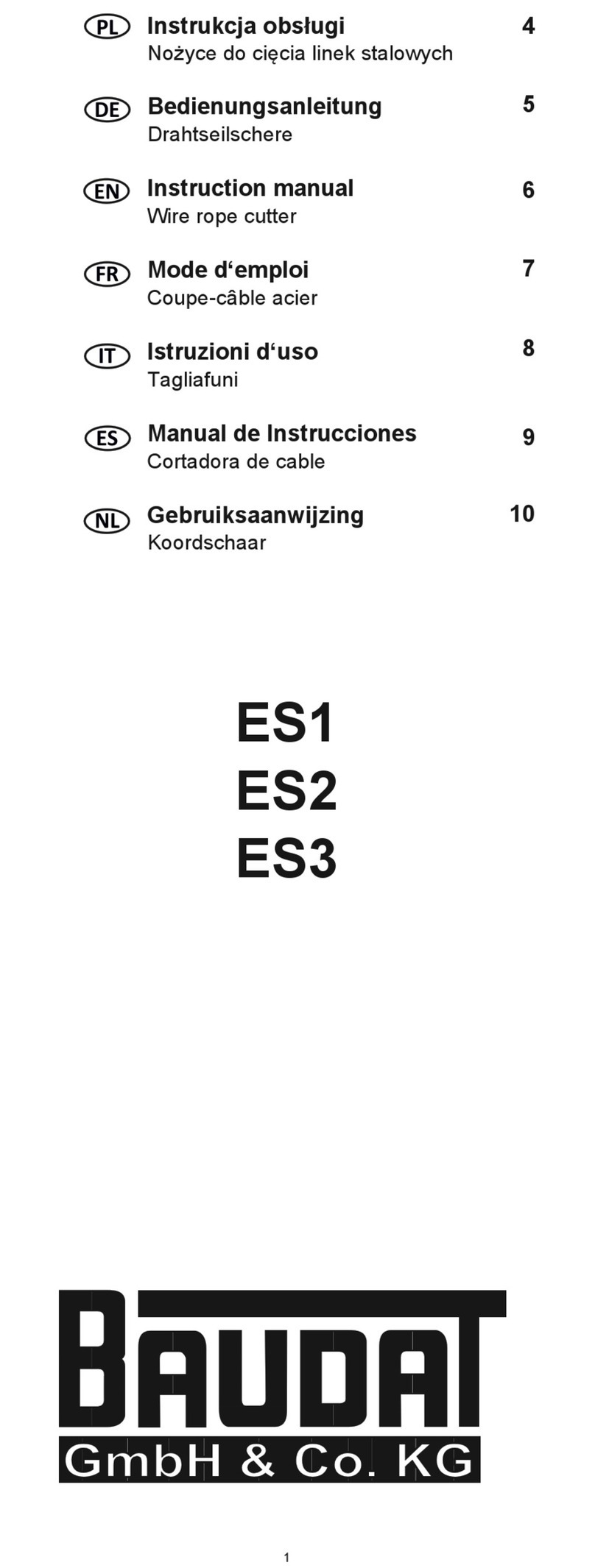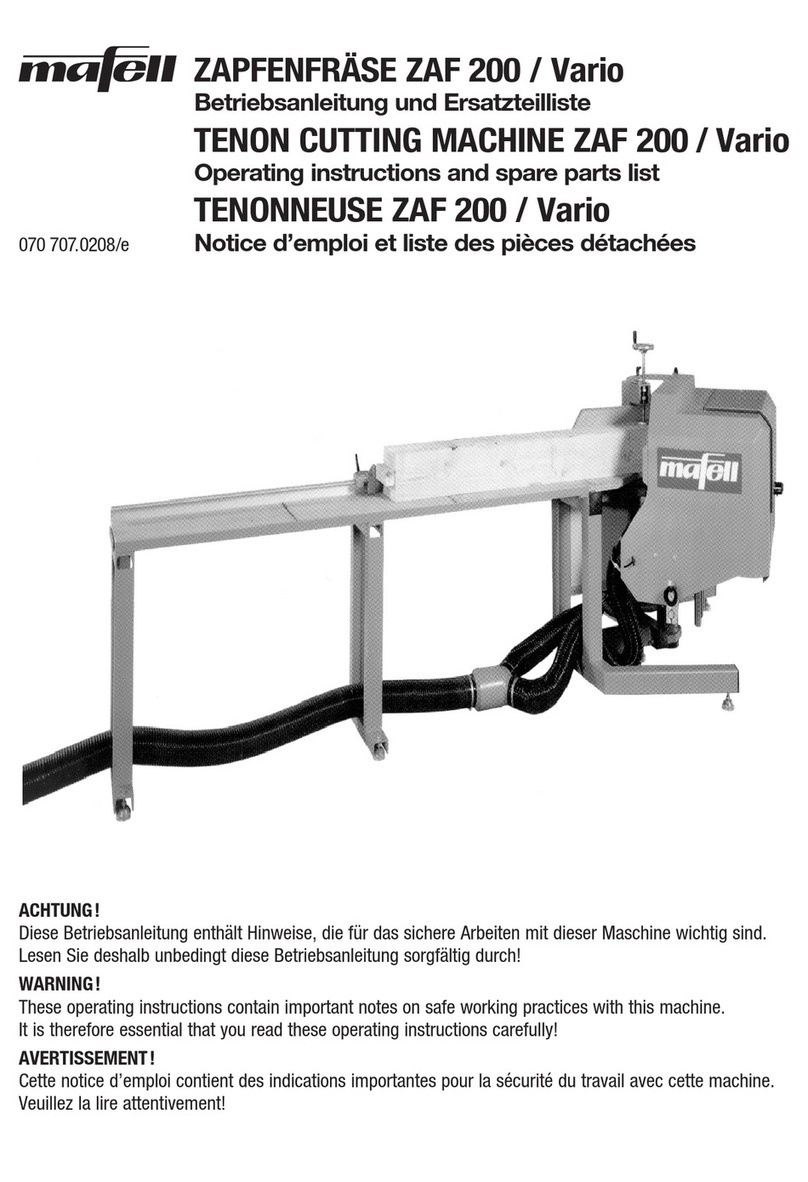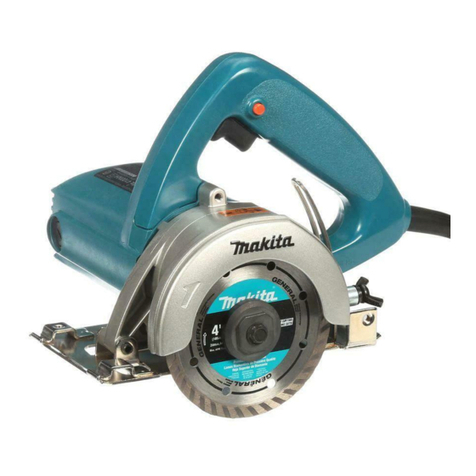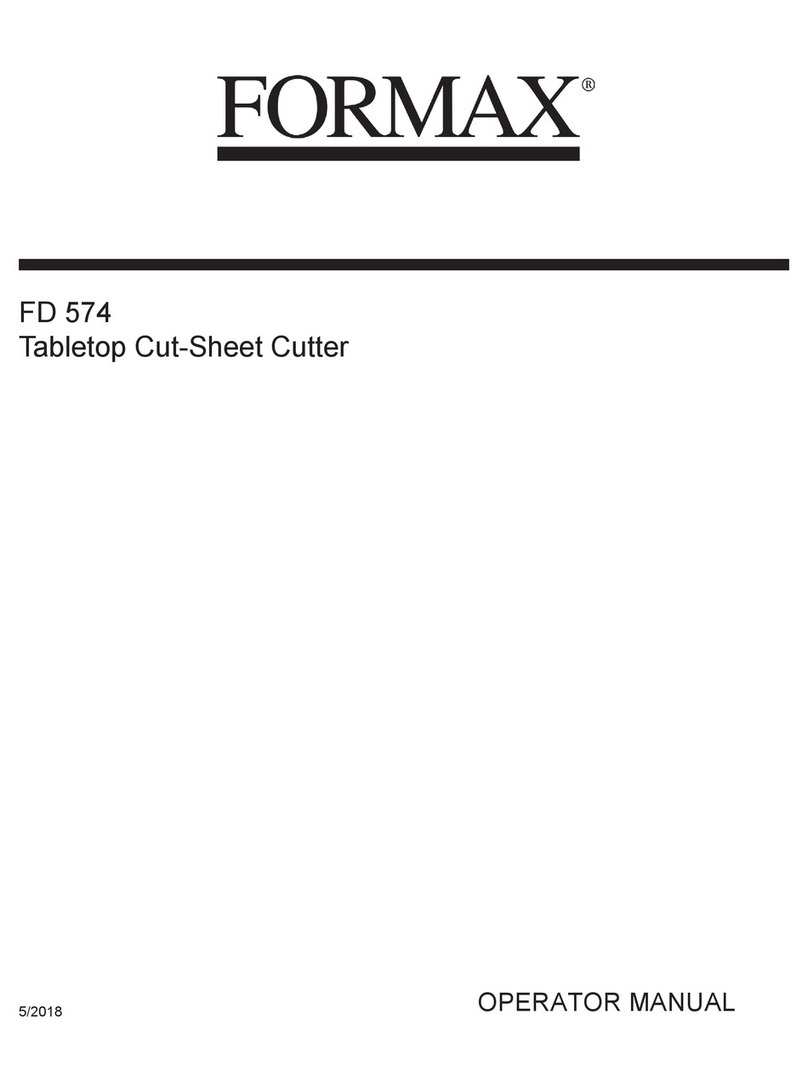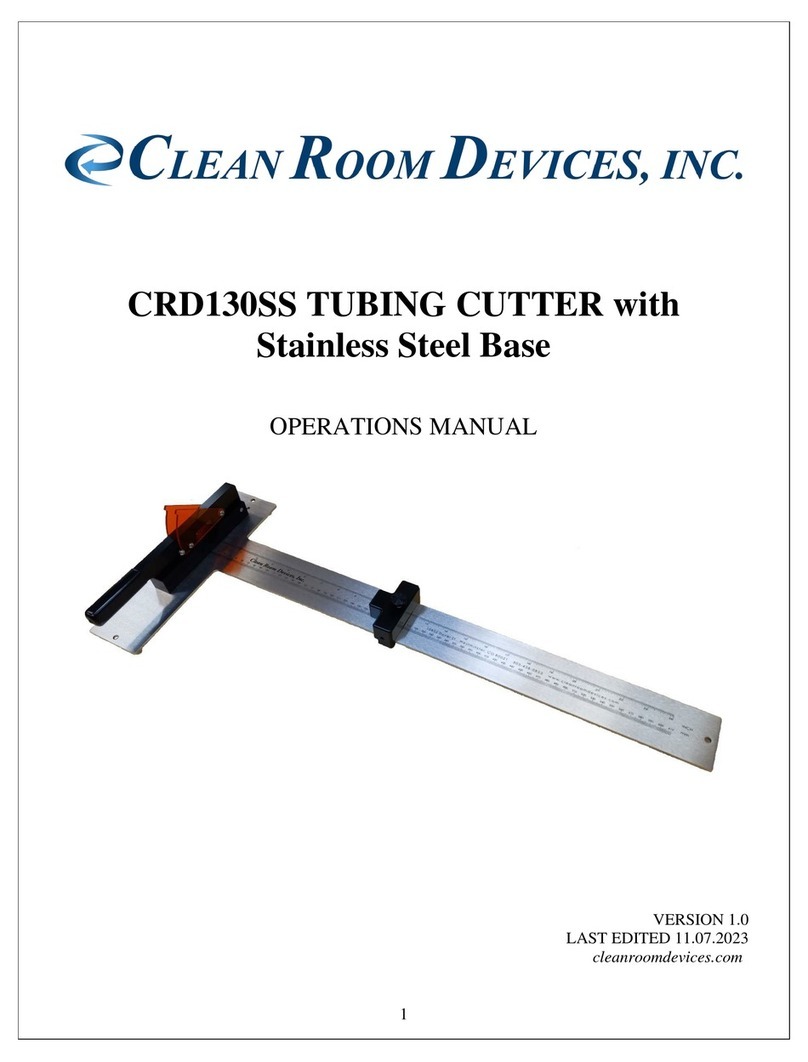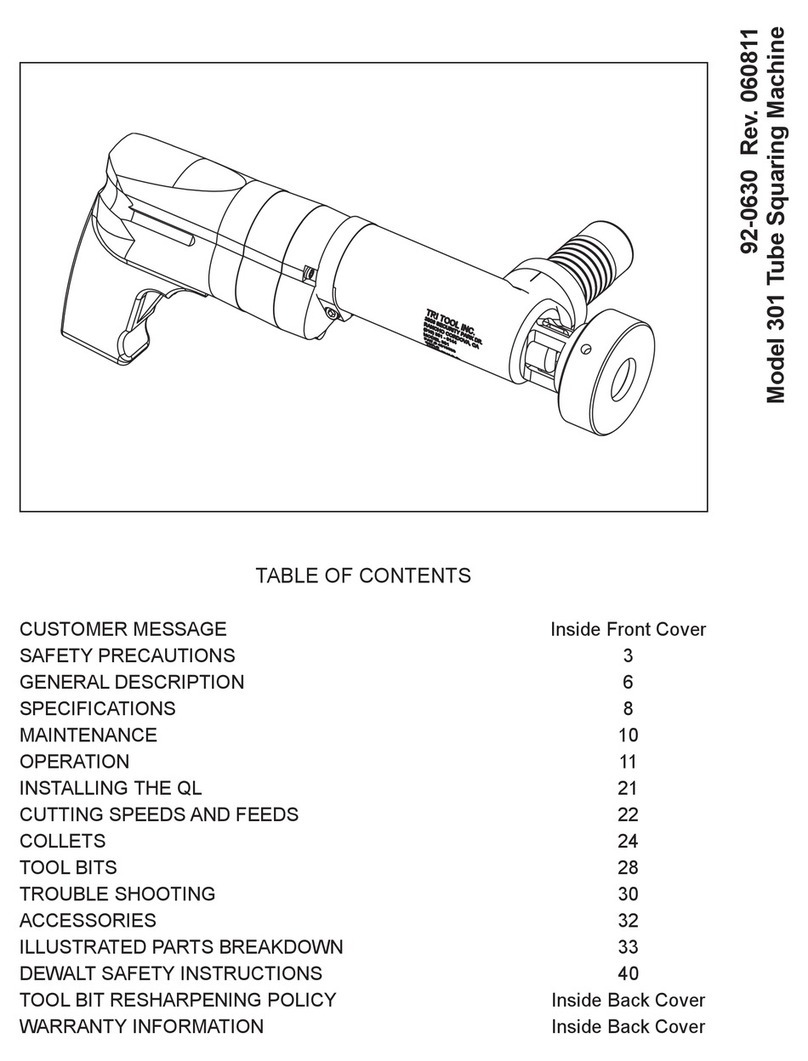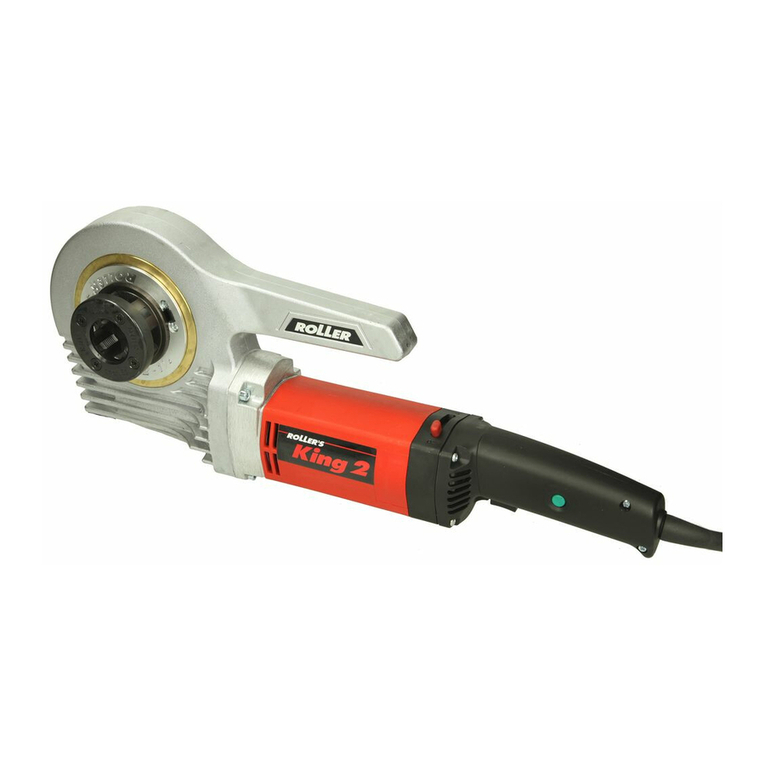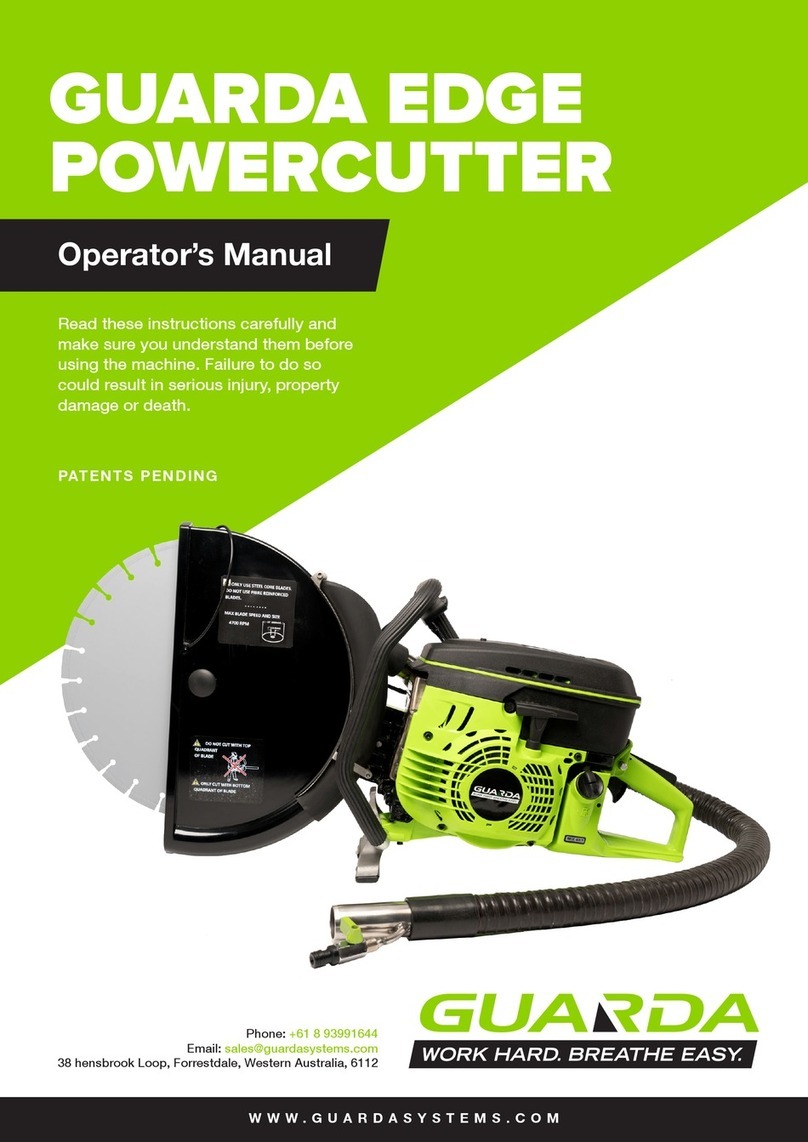
7
ENGLISH
wheel flanges support the wheel thus reducing the
possibility of wheelbreakage.
f ) Do not use worn down reinforced wheels from larger
power tools. Wheels intended for a larger power tool
are not suitable for the higher speed of a smaller tool and
mayburst.
g ) The outside diameter and the thickness of your
accessory must be within the capacity rating of
your power tool. Incorrectly sized accessories cannot be
adequately guarded orcontrolled.
h ) The arbour size of wheels and flanges must properly
fit the spindle of the power tool. Wheels and flanges
with arbour holes that do not match the mounting
hardware of the power tool will run out of balance, vibrate
excessively and may cause loss ofcontrol.
i ) Do not use damaged wheels. Before each use,
inspect the wheels for chips and cracks. If power tool
or wheel is dropped, inspect for damage or install an
undamaged wheel. After inspecting and installing
the wheel, position yourself and bystanders away
from the plane of the rotating wheel and run the
power tool at maximum no load speed for one
minute. Damaged wheels will normally break apart
during this testtime.
j ) Wear personal protective equipment. Depending
on application, use face shield, safety goggles or
safety glasses. As appropriate, wear dust mask,
hearing protectors, gloves and shop apron capable
of stopping small abrasive or workpiece fragments.
The eye protection must be capable of stopping flying
debris generated by various operations. The dust mask or
respirator must be capable of filtering particles generated
by your operation. Prolonged exposure to high intensity
noise may cause hearingloss.
k ) Keep bystanders a safe distance away from work
area. Anyone entering the work area must wear
personal protective equipment. Fragments of
workpiece or of a broken wheel may fly away and cause
injury beyond immediate area ofoperation.
l ) Hold the power tool by insulated gripping surfaces
only, when performing an operation where the
cutting accessory may contact hidden wiring. Cutting
accessory contacting a "live" wire may make exposed
metal parts of the power tool "live" and could give the
operator an electricshock.
m ) Never lay the power tool down until the accessory
has come to a complete stop. The spinning wheel
may grab the surface and pull the power tool out of
yourcontrol.
n ) Do not run the power tool while carrying it at your
side. Accidental contact with the spinning accessory
could snag your clothing, pulling the accessory into
yourbody.
o ) Regularly clean the power tool’s air vents. The
motor’s fan will draw the dust inside the housing and
CUT‑OFF MACHINE SAFETY WARNINGS
a ) The guard provided with the tool must be securely
attached to the power tool and positioned for
maximum safety, so the least amount of wheel is
exposed towards the operator. Position yourself
and bystanders away from the plane of the rotating
wheel. The guard helps to protect operator from broken
wheel fragments and accidental contact withwheel.
b ) Use only bonded reinforced or diamond cut‑off
wheels for your power tool. Just because an accessory
can be attached to your power tool, it does not assure
safeoperation.
c ) The rated speed of the accessory must be at least
equal to the maximum speed marked on the power
tool. Accessories running faster than their rated speed can
break and flyapart.
d ) Wheels must be used only for recommended
applications. For example: do not grind with the side
of cut‑off wheel. Abrasive cut‑off wheels are intended
for peripheral grinding, side forces applied to these wheels
may cause them toshatter.
e ) Always use undamaged wheel flanges that are of
correct diameter for your selected wheel. Proper
b ) Use power tools only with specifically designated
battery packs. Use of any other battery packs may create
a risk of injury andfire.
c ) When battery pack is not in use, keep it away from
other metal objects, like paper clips, coins, keys,
nails, screws or other small metal objects, that can
make a connection from one terminal to another.
Shorting the battery terminals together may cause burns
or afire.
d ) Under abusive conditions, liquid may be ejected
from the battery; avoid contact. If contact
accidentally occurs, flush with water. If liquid
contacts eyes, additionally seek medical help. Liquid
ejected from the battery may cause irritation orburns.
e ) Do not use a battery pack or tool that is damaged or
modified. Damaged or modified batteries may exhibit
unpredictable behaviour resulting in fire, explosion or risk
ofinjury.
f ) Do not expose a battery pack or tool to fire or
excessive temperature. Exposure to fire or temperature
above 130°C may causeexplosion.
g ) Follow all charging instructions and do not charge
the battery pack or tool outside the temperature
range specified in the instructions. Charging
improperly or at temperatures outside the specified range
may damage the battery and increase the risk offire.
6) Service
a ) Have your power tool serviced by a qualified repair
person using only identical replacement parts. This
will ensure that the safety of the power tool ismaintained.
b ) Never service damaged battery packs. Service
of battery packs should only be performed by the
manufacturer or authorized serviceproviders.
